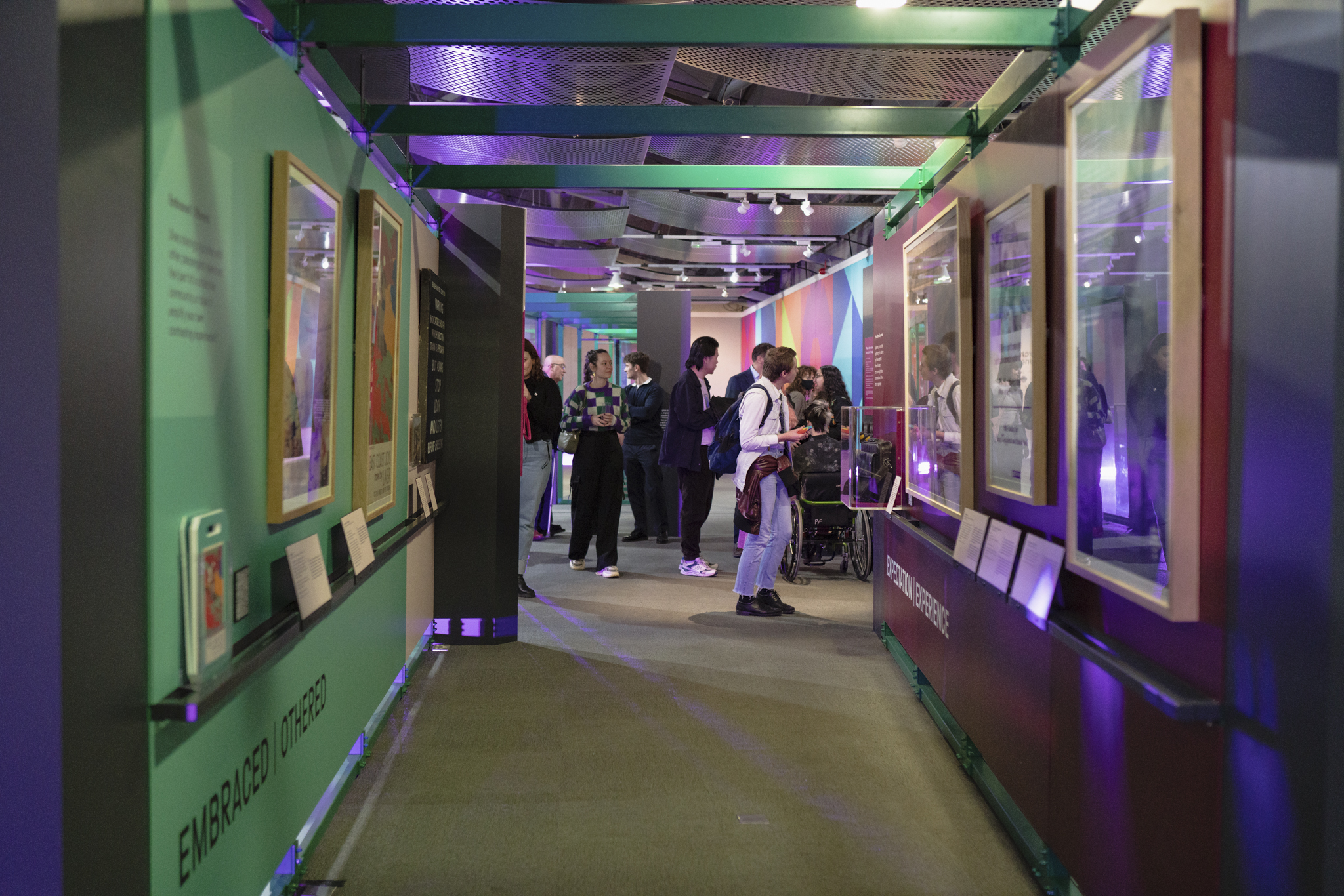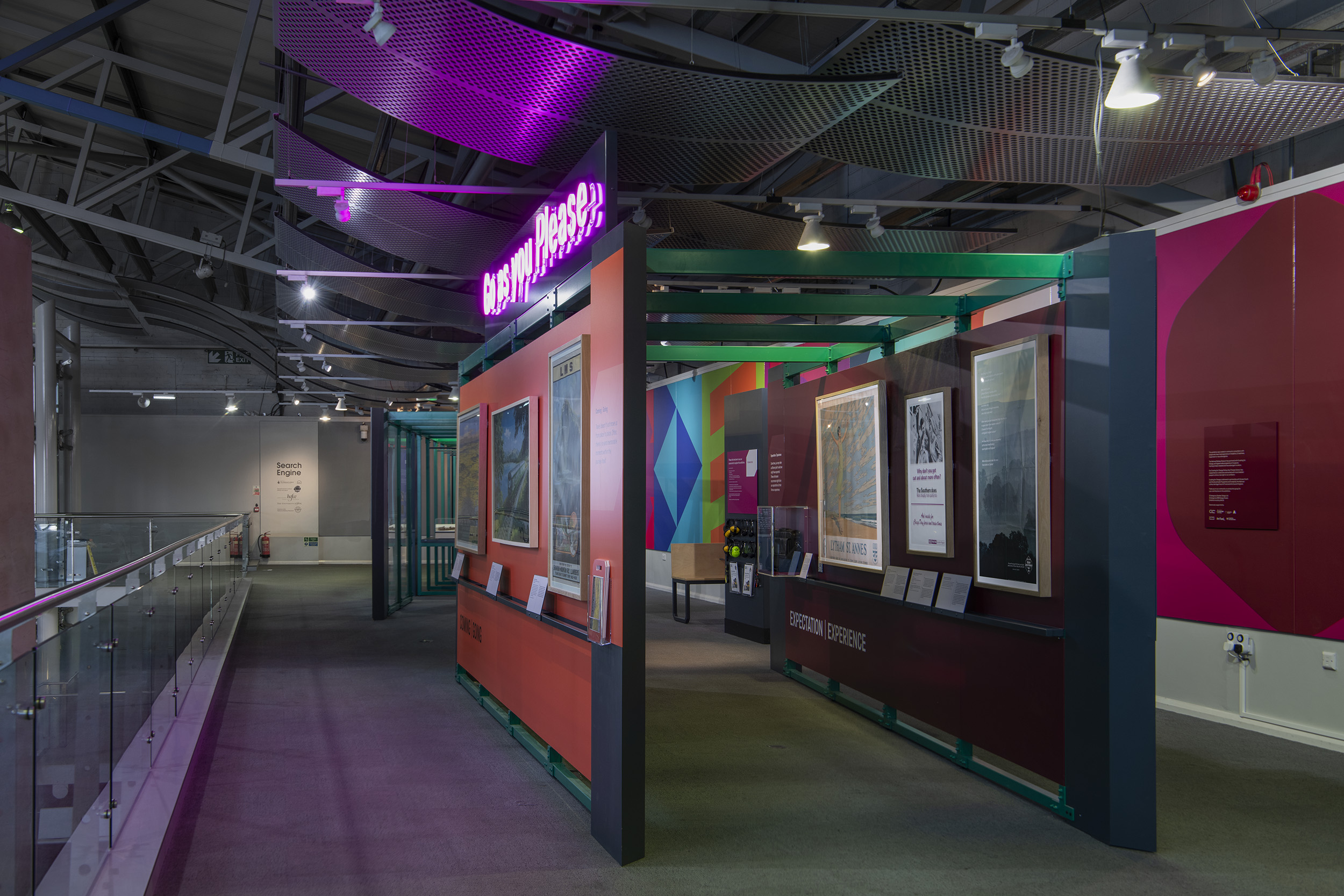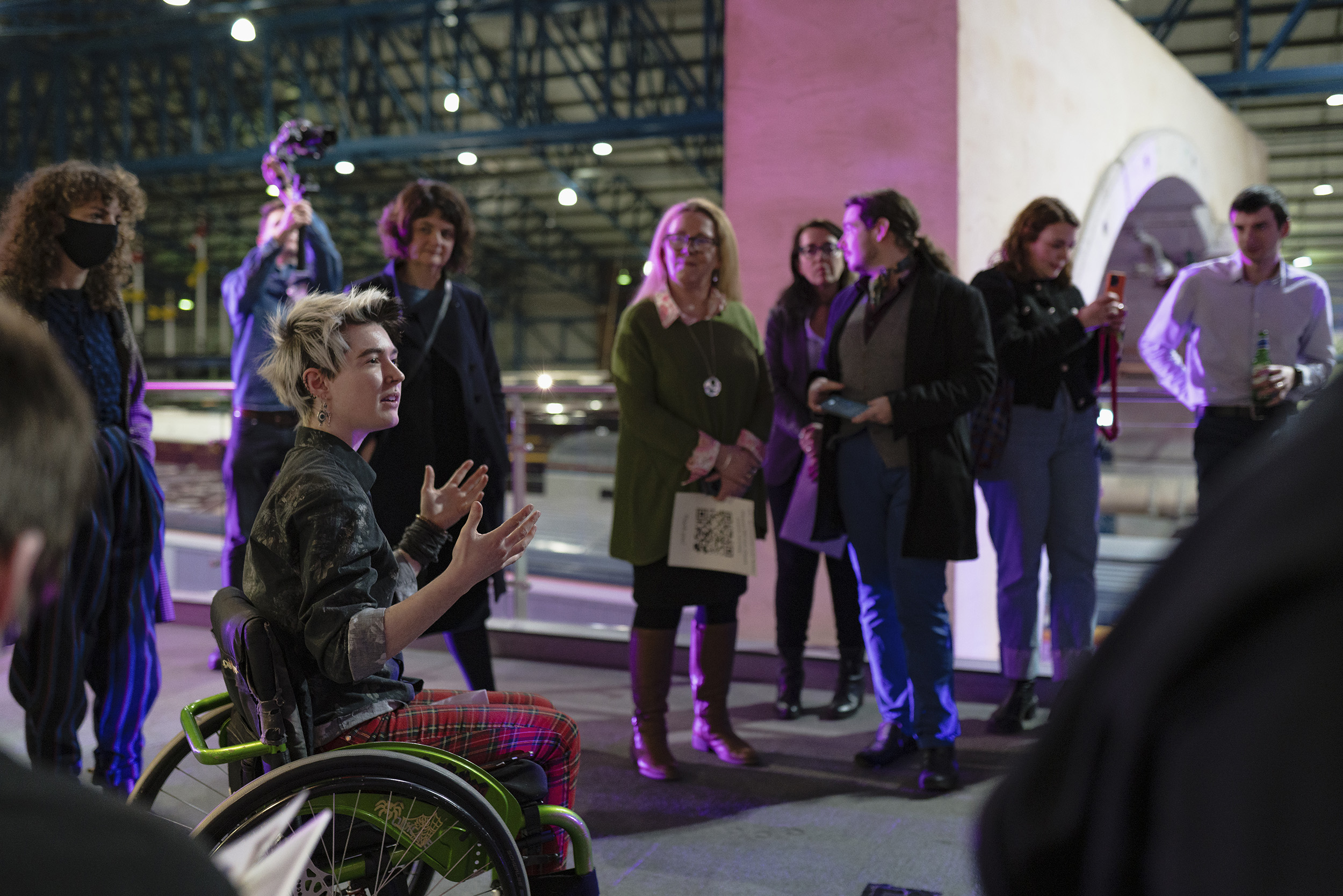‘Curating for Change’ was set up in response to the lack of disabled museum professionals across the Heritage Sector. This England-wide programme offers fellowships and traineeships to D/deaf, disabled and neurodivergent curators at host organisations.
The programme aims not only to build a more diverse sector workforce that is representative of the wider population, but also encourage a broader range of narratives to be explored in our galleries.
We asked Amy Thraves-Connor, Curator for Change Fellow at the National Railway Museum, to share her thoughts on the exhibition:
As a Curating for Change Fellow at the National Railway Museum, I have been curating and producing an exhibition – Go as you Please – that opened last week and will be on display for six months in our Highlights Gallery.

The aim is to use objects from our collection to tell underrepresented, and authentic, disability stories. It will showcase some of our railway artworks and posters, which we will use to discuss disabled people’s experiences of railway travel. The good memories. The personal stories. And yes, the challenges that we have at times.
By showing some of our artwork, I hope people see something beautiful and interact with these stories. I want to say to audiences, ‘Yes, we are disabled, and we might do or experience things in different ways to you, but we do still do things, we do still enjoy things, and we do get out and about.’

Only one of the artworks or posters has any direct relation to disability. To me, the importance of this exhibition is how I highlight that disability can be seen and considered within anything. I do not want to put disabled stories into a box of ‘otherness’. I have used these artworks to ask questions like ‘Are our experiences as disabled people represented here?’, or ‘How does this image relate to something we have experienced, or a memory we have?’. It is this kind of interpretation that allows the stories of disability to be discovered within any museum object.
That said, this exhibition is not only about disabled people. It is about anyone, and I want visitors to the exhibition to take their own interpretations and memories from these artworks and feel encouraged to question their thoughts around disability.

Gathering the stories and experiences for this exhibition, I spoke to local people, who, alongside myself, have lived experience of disability, D/deafness and/or neurodivergence. It is important when sharing underrepresented stories that we highlight people with lived experience, rather than speaking for people, as may have been done historically.
We spoke, in groups and individually, about what rail travel offers us as disabled people, our memories and experiences, the challenges, and how these artworks may or may not reflect that lived experience.
I was initially nervous about working with community participants as I had only a little experience with this work, but I found that everyone was open to sharing their stories. They were engaged and open in the discussions and people are excited to see their words in a museum!

I was surprised by how many people are involved in an exhibition project. I am so thankful to everyone who has allowed and encouraged me to utilise and work with some of our art collection for this exhibition. I really don’t think many visitors know about our extensive collection of paintings, prints, drawings and posters!
I hope the experience of working on this exhibition will help me to continue working in creative curation.